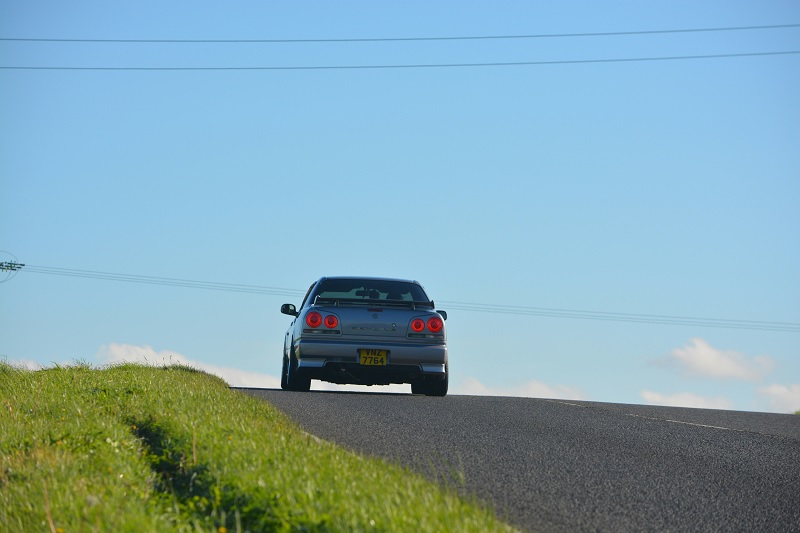
For many drivers, particularly those new to driving or unfamiliar with the challenges of hilly terrain, executing a hill start can be a nerve-wracking and daunting experience. Mastering the skill of hill starts is crucial in ensuring a confident, competent, and smooth driving experience – particularly in and around Sydney, where drivers are regularly faced with steep inclines and declines. At Prestige Driving School, we believe that an all-encompassing driving education goes beyond basic road rules and manoeuvres, extending to the specific skills required for safely navigating hills and inclines.
In this in-depth guide, our experienced instructors will provide valuable insight and practical techniques to help you conquer hill starts with confidence and ease. From understanding the correct handbrake usage and clutch control to maintaining a safe stopping distance on an incline, we will unpack the essential components necessary for successfully handling uphill driving situations.
Prestige Driving School is committed to ensuring our students are well-equipped with the skills, knowledge, and practical experience needed to manoeuvre diverse driving scenarios, including the often-tricky task of uphill driving. By following our comprehensive guide to hill starts, you'll be better prepared to tackle the unique challenges that steep gradients present, building your confidence and competence in managing all road conditions.
Join us as we explore the world of hill starts and uncover expert advice for safely and confidently tackling uphill driving situations, with step-by-step guidance from Prestige Driving School's seasoned team of instructors. Empower yourself with the tools and techniques needed to embrace uphill driving with confidence, overcoming previous anxieties and enjoy a smooth, proficient, and well-rounded driving experience.
Utilising the Handbrake for a Secure and Controlled Hill Start
The handbrake is an essential tool for ensuring a safe and controlled hill start, preventing your vehicle from rolling backward as you prepare to move forward.
Tip 1: Engage the handbrake before releasing the foot brake – When stopping on a hill, engage your handbrake before releasing your foot brake to hold your vehicle in place securely.
Tip 2: Gradually release the handbrake – As you begin to move forward and find the clutch's biting point, gently release the handbrake while applying pressure to the accelerator. This gradual release ensures your vehicle smoothly transitions into motion without rolling back.
Balancing the Clutch and Accelerator for a Smooth Start
Effective clutch control skills are vital for executing a seamless hill start, enabling you to maintain a steady and controlled forward movement.
Tip 1: Find the biting point – On a hill start, finding the biting point allows your vehicle to stay stationary without rolling back and prepares it for a controlled launch when equipped with a manual transmission.
Tip 2: Gradually apply gas – As you slowly release the clutch, gently apply pressure to the accelerator to begin moving forward smoothly. It is crucial to strike a balance between clutch and accelerator control to prevent stalling or abrupt starting.
Maintaining a Safe Stopping Distance
Ensuring a safe stopping distance is crucial for uphill driving safety, as it provides ample time and space to respond to changing traffic conditions and avoids potential collisions.
Tip 1: Uphold the two-second rule – When driving behind another vehicle uphill, maintain a two-second gap between your vehicle and the one ahead. You can measure this distance by selecting a stationary object and counting the seconds it takes for your vehicle to reach the same spot.
Tip 2: Adjust stopping distance for adverse conditions – In wet or slippery conditions, increase your following distance to at least four seconds, as your vehicle may require extra space and time to come to a complete stop under these circumstances.
Assessing Road Conditions and Traffic Flow
Effective uphill driving requires keen awareness of the surrounding environment, ensuring that your actions adhere to traffic conditions and road features.
Tip 1: Observe the gradient – Assess the slope of the incline before beginning a hill start, as steeper gradients may necessitate greater clutch control and more gentle release to prevent rollback.
Tip 2: Be alert for oncoming traffic – Uphill roads can present limited visibility, so remain vigilant for oncoming vehicles and adjust your manoeuvres accordingly to ensure a safe driving experience.
Conclusion
Prestige Driving School's comprehensive guide to hill starts delivers expert advice and practical tips for confidently and safely tackling uphill driving situations, empowering you with the skills needed to master this critical aspect of driving. Our experienced instructors and tailored lesson plans focus on cultivating well-rounded driving abilities, encompassing competence in various road conditions and scenarios, including hill starts.
By following this in-depth guide, you will be better prepared to overcome the unique challenges associated with hill starts, conquering any previous trepidation to achieve a confident and proficient driving experience. At Prestige Driving School, we're dedicated to providing our students with invaluable knowledge, practical guidance, and support to ensure a thorough understanding of all the skills necessary for safe and efficient driving.
Choose Prestige Driving School to perfect your hill start techniques and gain the confidence you need to tackle any uphill driving scenario with ease. With our experienced instructors by your side, you'll be well on your way to mastering the complexities of hill starts, enhancing your overall driving competence and ensuring a smooth, comprehensive driving experience. Enrol now and let our driving lessons in Liverpool help you become a confident and accomplished driver.